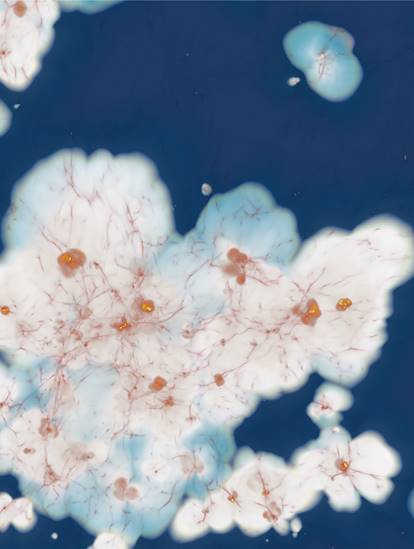New JWST low-mass galaxy observations could help settle scientific debate about early universe origins

Image: The process of reionization in numerical simulations. Credit: J. Rosdahl, H. Atek and the SPHINX project team
In summary
- International researchers have found that small galaxies are very likely at the origin of reionization
- Swinburne led the use of the James Webb Space Telescope to obtain the first spectra of very low-mass galaxies
- Their observations could help settle a long-running scientific debate about the drivers of reionization
International researchers have made a major astronomical breakthrough, revealing that small galaxies are very likely at the origin of reionization – a crucial period in the early universe where neutral hydrogen transformed into ionized gas.
A paper published in Nature has used the James Webb Space Telescope (JWST) to obtain the first spectra of very low-mass galaxies less than a billion years after the Big Bang.
Their observations could help settle a long-running scientific debate about the drivers of reionization and could be essential to understanding the formation of the very first galaxies.
Swinburne University of Technology is the only Australian university as part of the international collaboration, led by Associate Professor Ivo Labbe.
Co-author, JWST Australian Data Centre Senior Scientist, and Swinburne Laureate Postdoctoral Research Associate in Galaxy Spectral Modelling Dr Themiya Nanayakkara says he is thrilled with the outcomes of this global research involving the Paris Astrophysics Institute (Sorbonne University/CNRS), and universities in Pittsburgh and Texas.
“This work makes a strong case for smaller galaxies to be the driving force behind reionizing the universe. While the number of energetic photons produced by these small galaxies may come as a shock to many, the cosmological implications are also profound.”
Reionization, which occurred some 500 to 900 million years after the Big Bang, marks a crucial period in the history of the universe. It represents the transformation of neutral hydrogen – which predominated the universe – into ionized gas and marks the end of the ‘Dark Ages’ in cosmic history.
Scientists have been arguing what drove the reionization of the universe for a long time. Confirmation of the hypothesis relating to low-mass galaxies has proven particularly difficult, given their low luminosity.
The study achieved this technological feat through the unique combination of JWST sensitivity and the gravitational lensing effect of the Abell 2744 cluster, making nearby galaxies act like cosmic magnifiers, distorting space and amplifying the light of background galaxies.
The team wants to extend this study to a larger scale, to confirm that this location is representative of the average distribution of galaxies in the universe.
“We have now entered uncharted territory with the JWST,” says Dr Nanayakkara. “This work opens up more exciting questions that we need to answer in our efforts to chart the evolutionary history of our beginnings."
-
Media Enquiries
Related articles
-

- Astronomy
- Technology
- Health
- Science
- University
- Sustainability
- Engineering
Swinburne highly cited researchers reach the top in 12 fields
Ten Swinburne academics have been named on the Highly Cited Researchers 2025 list, released by Clarivate
Tuesday 02 December 2025 -

- Astronomy
- Technology
- Science
- Engineering
Meet Swinburne’s Roo-ver Mission team
Roo-ver will be Australia's first lunar rover, and it’s being designed, built and tested in Australia. Swinburne is playing a key role in the design and construction of Roo-ver, through its involvement in the ELO2 Consortium.
Wednesday 26 November 2025 -

- Astronomy
- Technology
- Science
- Aviation
- Engineering
Shaping space innovation at the International Astronautical Congress
The 76th International Astronautical Congress (IAC) united over 7,000 delegates from more than 90 countries to explore the future of space. Swinburne staff and students delivered 20 talks, panels and presentations, showcasing Australia’s growing leadership in research and education.
Friday 10 October 2025 -

- Astronomy
Indigenous students explore the cosmos through Swinburne’s astrophysics program
Indigenous students explored astrophysics at Swinburne, connecting science and culture while building pathways to future careers in STEM.
Friday 19 September 2025 -

- Astronomy
- Science
Swinburne’s space stars on show at Parliament House
Swinburne University of Technology hosted a three-day exhibition at Queens Hall in Victoria’s Parliament House . The showcase highlighted the innovative work being done at Swinburne to support the burgeoning space science sector.
Friday 30 May 2025

